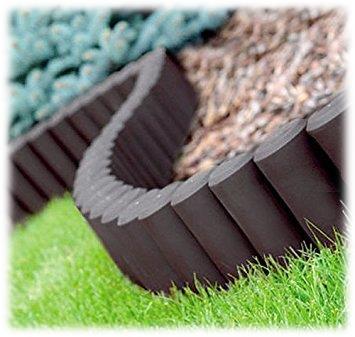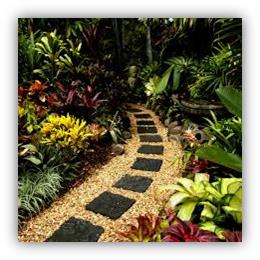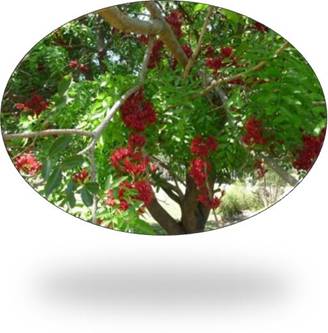July in the Garden
July in the garden will be cold and dry, but winter can never be boring if we dip into our treasure chest of saucy succulents and splendid shrubs which are dressed in their best right now. So, let’s plant lots more!
Melt the ice with these hot sellers


Winter-flowering aloes like the trusty Krantz aloe (Aloe arborescens) grows from sea level to the highest mountain tops and sets winter gardens alight with its bright orange-red flowers. Birds and bees adore the nectar-rich blooms too.
If you want to choose a very dramatic plant for a large container, choose the sculptural and very striking Tree aloe (Aloe barberae). This aloe is a perfect focal plant for the garden as well but, needs space to grow in as it can reach a height of 15m. Expect pink to orange flowers in winter. There are plentiful and pretty new aloe hybrids of all sizes to choose from as well. Enhance your aloe collection with other types of succulents like crassulas, kalanchoes and sedums, which are equally pretty now, even if not in flower. Their foliage colours intensify and with their strong structural forms, it is hard to ignore them in a winter garden.
Fine planting is fynbos!
Heritage plants like proteas and pincushions, are common nowadays, so do plant some of your own. In a natural habitat the members of the Proteaceae family grow in poor, well-draining soil with a low pH (slightly acidic – between 5 and 6). The plants prefer hot, dry summers and cold, wet winters, but many will grow well in summer rainfall areas too.
Bad drainage is a recipe for disaster, although some species and cultivars are more tolerant of heavy soil than others. Prepare the soil well by mixing in well compost and remember not to use fertilizer. Slightly raised beds or mounding of heavy soil will improve drainage and so will adding a little lime to break up the clay when preparing a planting place. You can also grow all of these plants in large containers. Protect with frost cloth if you are in an area which is affected by this

Great balls of fire…

Heavenly bamboos are available in many shapes and sizes, but if you need a foliage plant that can really create fiery winter colour, pick Nandina ‘Pygmaea’ which is a dwarf plant growing to about 50cm tall and wide. These plants are very cold-hardy and look fantastic if planted in bold groups as ground covers, as border plants in full sun or light shade, or in pots. They are absolutely problem-free to cultivate.
Bedding bestie

Sweet alyssum (Lobularia maritima) is possibly the most loved garden annual. Although one can plant them throughout the year, they grow and flower much lusher in the cool seasons. They create much joy in the winter garden when combined with other cool season annuals like pansies, petunias and lobelias. All the alyssum varieties grow fast and have a compact size of 10cm to 15cm high and 20cm wide. They are perfect for bordering, (especially around roses), as filler plants in containers, window boxes and hanging baskets, and even between paving blocks. Alyssums like full sun to flower really well.
Rose care for July
In most areas, rose pruning is done during the last week of July, and the first week of August. Gardeners who approach this task with trepidation can relax, as rose pruning is basically the removal of dead wood and weak and old twiggy stems, in order to attain a neat and pleasing shape, to open up space for new stems to grow, and to cut back to a desired height.
After you have completed the pruning process, dig in the old mulch layer and freshly added compost into the soil around the bushes, feed with a Vigorosa, renew the layer of mulch afterwards and water deeply.
Pruning to do

Deciduous fruit trees, like peaches, apples, plums and apricots, can also be pruned now.
Lawn Matters
- Take all lawn-mowing equipment for a proper service and refitting of new blades.
- Spend the time enhancing the shape of your lawn by correcting awkward shapes and fixing damaged edges. You might want to build a neat brick edge to frame a formal lawn, or to think about adding another form of edging between the lawn and flower beds.

It’s lawn dressing time in 2-3 weeks so don’t let time catch up on you!
Cool ideas with pot plants


Fill your house with all kinds of houseplants to keep you company in winter. Some plants will, for instance, clean the air. Besides, being surrounded by them, leaves one with a sense of well-being and calm. Using indoor plants is also the affordable and easy way to give any room a quick new look.
- Fill an empty corner in a large room with something big and bold like a bamboo palm or Ficus tree. They like bright light.
- Add pizazz to the fireplace with succulents like echeverias, haworthias, house leeks (Sempervivum), Echinocactus, or foliage plants like the radiator plant (Peperomia). These plants like a warm atmosphere, bright, indirect light, and very little water.
- Add greenery to a home office. Plants like peace lilies (Spathiphyllum) and the bird’s nest fern (Asplenium) clean the air and neutralise secondhand smoke. They prefer bright, indirect light, medium water, but a humid atmosphere.
- Create a green corner on a table near a window with a collection of pretty houseplants to potter around with all winter. Display them in all kinds of containers. A good choice for low light is Aglaonema‘Silver Queen’, ‘mother-in-law’s tongue ‘(Sansevieria), peace lily and bird’s nest fern.
Hot tip: Display indoor plants close to where you work, sit or sleep to get the most advantage from their air cleansing capabilities
Create new paths
This is the best time to access the “bones” or structure of your garden in terms of pathways and access to different areas. Widen pathways that are being taken over by the encroaching garden, by adding more pavers. Add a “secret” pathway into very deep beds – this also assists tremendously with maintenance of the garden. Add pavers and a bench as a special feature.
Hot tip: When laying any pavers, make sure you use weedguard and river sand under the pavers.

Pesky pests!

Cochineal is a sap-sucking insect that feeds on cacti, aloes and prickly pear plants. Feeding causes discoloration of plants and swelling around the area which has been fed on. The plant’s outer pieces eventually start to die, leaving it with only bare, woody stems. Spray with a mixture of Oleum and Malathion.
Cochineal should be controlled when they lay their eggs in October and again in February. It is easily confused with lookalike mealybug and that has become more and more of a problem on roses, other small shrubs and plants, especially during these past long periods of droughts. They are more easily visible in July and should be brushed off and then sprayed with a bio-oil based insecticide at double the recommended concentration.
Bird Business
Attracting birds to the garden has become a big hobby even in the heart of big cities. Visit our Feathered friends department where you can buy bird feeders, bird food, bird baths, nesting logs, and all other kinds of related products.
Top bird attracting trees which supply either nectar or fruit (or both) to plant now, include: Weeping Boer Bean (Schotia brachypetala), Acacia thorn trees, wild peach (Kiggelaria africana) and coral tree species (Erythrina).


Checklist for July

- You can break up heavy clay soil by digging in a dressing of agricultural lime. Ailing lavenders and clematis will also benefit from a small dose of lime in winter and adding a light dose to irises and stocks will promote good flowering in spring.
- In the cutflower garden, you will be able to pick the first bunches of sweet smelling stocks and sweetpeas. Keep on picking, to invite more flowers.
- Feed citrus with VITA 3:1:5 and water well.
- Protect cold-sensitive vegetables like lettuce, celery and parsley from winter frosts with frost guard.
- Fill up your rock garden and the openings in cement retaining walls with pelargoniums in different colours. These plants are ideal to add colour to hot and sunny places like these.
- Conifers grow actively in cooler months and can be lightly pruned to shape them neatly. Never cut into old wood, rather just shave off healthy foliage and growing tips with sharp secateurs or a hedge clipper – this will result in fresh growth
Happy Gardening !



